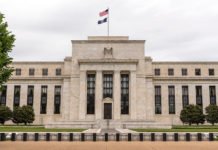More mahi to occur.
- We expect the Reserve Bank to lift the OCR by 25 basis points to 5.5 percent next week.
- Fiscal spending and a surge in migration suggests a higher peak in interest rates than signalled in February.
- The RBNZ may not move immediately to Westpac’s 6 percent OCR peak – but will signal an openness to getting there.
- If the RBNZ does move to Westpac’s 6 percent OCR peak, then the chance of a 50-point hike is high.
- Expect an ongoing tightening bias to warn markets off pricing in rate reductions.
Recent developments.
In its February Monetary Policy Statement the Reserve Bank signalled a peak cash rate of 5.50% this year, with the contours of the projection most consistent with getting there in three further steps of 25 basis points. But we’ve already had signs that the RBNZ is wavering from that path, the most obvious one being the surprise 50 basis point hike at the April policy review.
That decision was preceded by a speech from RBNZ Chief Economist Conway that was distinctly on the hawkish side, including the comment that: “It is unclear whether inflation expectations are falling fast enough to mean current and projected OCR settings [our emphasis] are consistent with positive real interest rates, and thus likely to be disinflationary.”
Economic developments since then have been a distinctly mixed bag for the RBNZ. Recent data outturns will have given them some comfort that monetary policy is working, and that inflation is on the way down from its highs. But at the same time, some fresh upside risks to the inflation outlook are starting to crystallise.
March quarter inflation fell well short of the RBNZ’s forecast, with the annual rate dropping from 7.2% to 6.7% against the RBNZ’s view that it would tick up to 7.3%. Most of the surprise reflected global influences, with the Covid-related disruptions to supply chains and shipping costs now unwinding. Locally driven inflation pressures are still running hot, although there are signs of softening in areas like homebuilding. Lower March quarter inflation and lower surveyed inflation expectations probably comforted the Reserve Bank and might knock about 30 basis points off the peak OCR in the RBNZ’s projections.
The news on economic activity has been less clear. December quarter GDP was much weaker than the RBNZ expected, with a surprise decline of 0.6%. The disruptions caused by Cyclone Gabrielle also raise the risk that we see another dip in activity in the March quarter. However, that would be a short-lived effect, and more the result of a hit to the economy’s capacity than to demand.
It’s the forward-looking view, though, that will be more challenging for the RBNZ. Its forecasts effectively assumed that its ‘engineered recession’ would be under way by now, starting with a 0.5% fall in June quarter GDP. We’re halfway through that period now, and there’s little to suggest that the economy has turned that abruptly.
We see a similar story in the labour market. The unemployment rate held steady at 3.4% in the March quarter, a little better than the RBNZ’s assumption of a small rise to 3.5%, but not meaningfully different. However, their forecasts then had unemployment lifting rapidly to 3.8% in the June quarter, with further large increases from then on. Again, there’s very little to suggest that that’s the path we’re currently on. If anything, jobs growth has been accelerating lately, no doubt helped by the fact that there are more people around to hire.
In the April OCR review, the RBNZ noted three factors that could lead to more persistent inflation pressures: the risk of more stimulatory fiscal policy settings, the additional activity associated with the recovery from Cyclone Gabrielle, and the rebound in net migration. All three of those factors will have to be addressed in the May statement and all three imply more inflation pressure and a higher OCR.
The risk of a boost in fiscal spending has been on the cards for some time – not least to keep up with cost pressures in public services. That risk has now materialised, with yesterday’s Budget revealing more than $8bn of additional spending over five years. We can only guess at how that compares to what the RBNZ feared. But given that as a rule the RBNZ takes the Treasury’s fiscal forecasts as a given, this is something that wasn’t in their central forecast previously. As a rough guide, we think this could add another 20 basis points to the OCR track.
The cyclone recovery is at least one area where the RBNZ may be feeling some relief. The Government has confirmed that its share of the rebuild (such as roads, bridges and water infrastructure) will largely be covered by deferring other capital spending plans. That will dampen the net boost to demand and the extent of the draw on the nation’s capacity.
Net migration has surged to an inflow of 65,000 people over the last year, far in excess of what the RBNZ had expected at this point. Migration has complex effects on the economy, adding to both capacity and demand to varying degrees across different sectors. The key point here, though, is that the RBNZ has traditionally regarded migration as an inflationary force on balance. And the April policy statement confirmed that this remains the case – the RBNZ does not buy into the view that migrants will bring inflation down by alleviating labour shortages.
The resurgence in migration to date could be worth an additional 30 basis points on the OCR track. However, it may be worth even more depending on what the RBNZ is willing to assume going forward. We note that the Treasury made a fairly conservative assumption in yesterday’s Budget, with a net inflow of 52,000 people for this year, effectively implying that the pace of inflows had already peaked. However, the RBNZ may be prepared to take a stronger view at this point.
The final concern for the RBNZ – possibly related to the migration rebound – is house prices. While the housing market remains weak, recent data suggests that it may be bottoming out, much earlier than the RBNZ assumed – its February forecasts included a further 13% fall in prices this year. The RBNZ does not directly target house prices, but it will need to consider the implications for consumer spending via the wealth effect.
Strategy going forward.
As discussed in our recent Economic Overview1 we see a need for some further monetary tightening and an increase in the OCR to 6 percent by August 2023. After that, we think the Reserve Bank will need to hold interest rates at that level until May 2024 when it should be more apparent and with greater confidence that inflation will sustainably fall to within the 1-3 percent target range. By then, CPI inflation should hopefully be close to 4 percent and in a fast downtrend.
On balance we see a strong case for an upgrade in the RBNZ’s own assessment of the OCR peak. The key questions are the extent of the reassessment they do now and the balance of risks they portray around that OCR profile looking forward?
Our sense is that the RBNZ may not immediately go the full way and push the projected OCR profile to 6 percent. The RBNZ may want to see more data on the progression of the migration cycle before recognizing the need to push rates to 6 percent. The RBNZ might upgrade their migration profile a bit (and presumably more than Treasury’s already out of date assumptions) and look for further data to make a fuller assessment. In the RBNZ’s mind this might justify a move of the OCR peak to 5.75.
But we are sure the Bank will want to portray a hawkish tightening bias from that 5.75 peak to try prevent markets bringing forward expectations of interest rate cuts. A hawkish bias is also consistent with the Bank re-emphasising a data-dependent approach and looking to data available over June and early July to update their assessment of the migration cycle (new data will be available 13 June and 12 July), housing market developments, GDP, and the labour market. We expect that data to present a picture of ongoing strong migration, a slowing economy with some potential green shoots in areas most impacted by the migrant in flows (housing, retail spending, rentals). Hence, we are confident in our view the Bank will get to 6 percent by the August Monetary Policy Statement where they can present a new set of projections.
So, what does that mean for the OCR in the May meeting?
- Our central (modal) view: The RBNZ tightens by 25 basis points in May and shows another 25 points in the July meeting as well as an appreciable chance of a further tightening in August. This is consistent with the RBNZ taking a gradual approach to 5.75 percent and recognizing the risks of a further move to 6 percent.
- The alternative risk scenario (40 percent chance): The RBNZ tightens by 50 basis points and matches Westpac’s forecast of a 6 percent peak OCR. The 50-point move in May covers a good amount of the required ground and allows one further 25-point increase in July to finish the job (and maintaining a hawkish bias from there).












